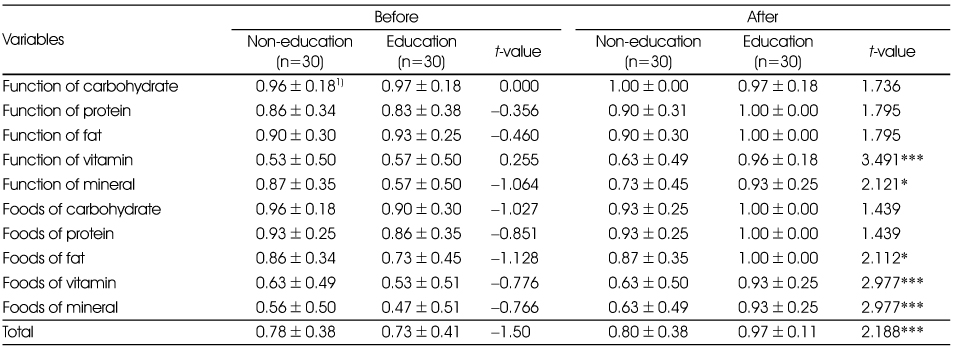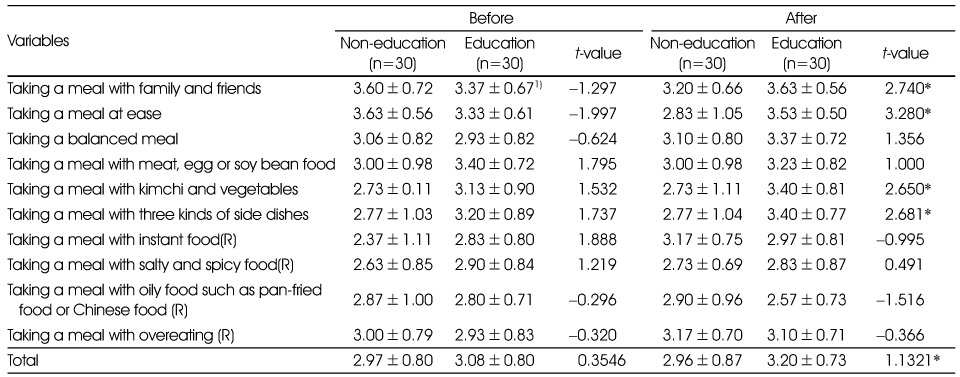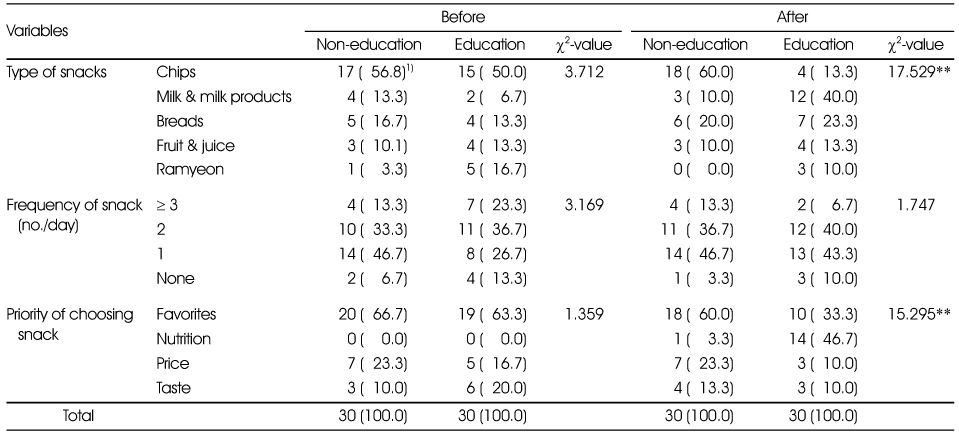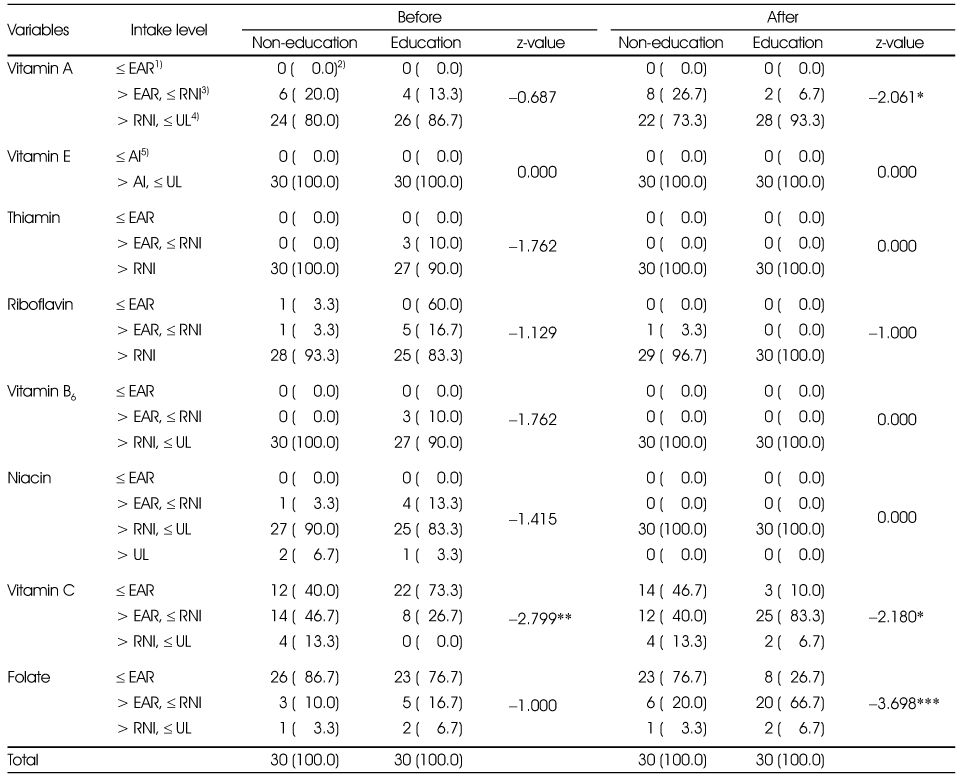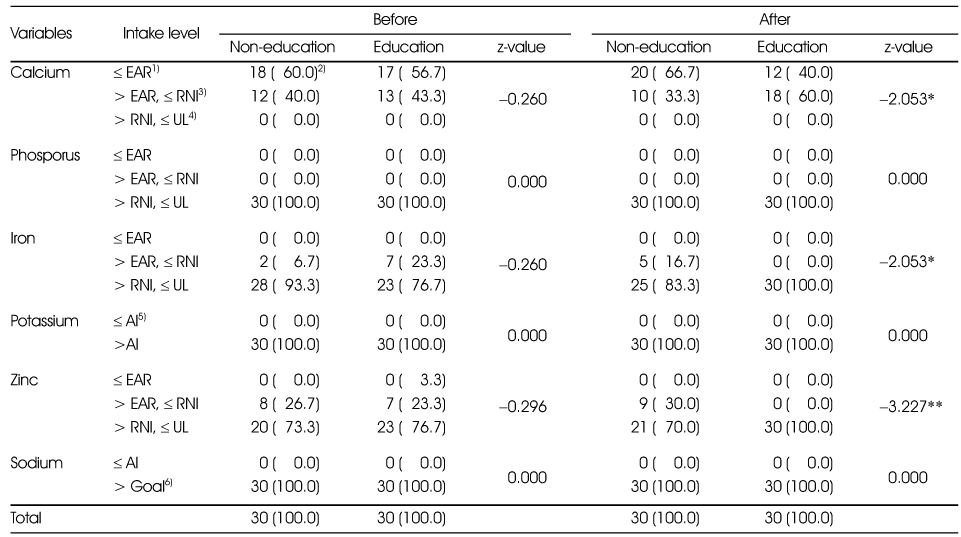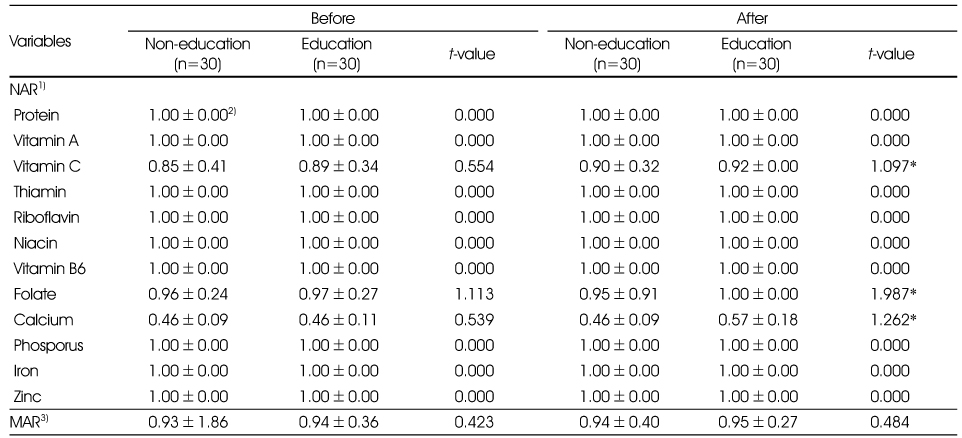References
1. Lee KH, Kim KW, Lee YK, Lee SM, Son SM. Nutrition education & counseling 3rd edth ed. Seoul: Life Science Publishing Co.; 2015. p. 353–357.
2. Cho S, Lee HJ. Development of dietary schedule for improved nutritional support during training period of junior & senior high school fencers in Ulsan city. J Korean Diet Assoc 2011;17(1):32–46.
3. Sung HI, Chang KJ. A survey on self-reported health and eating habit of elite female adolescent athletes in Incheon by sport type. J Korean Soc Food Sci Nutr 2005;34(3):366–373.
4. Lee HM, Yoon BK, Kim SJ, Park WI, Lee SH, Kwak ES, et al. The difference of nutritional factors for high school female tennis players before and during the competition. J Life Sci 2008;18(8):1072–1082.
5. Kim YO. Identification of the dietary intake patterns of Korean adults according to their exercise levels. Korean J Community Nutr 2002;7(6):769–780.
6. Jang HS. Identification of the nutrient intakes, energy expenditure according to exercise levels of middle school students. Korean J Exerc Nutr 2003;7(2):271–222.
7. Jang MK, Ahn CS, Park SM. A behavior-modification approaches to improved exercise performance for athletes through the multiple nutritional counseling. Korean J Nutr 2001;34(1):79–88.
8. Hwang SH, Jung KA, Kim C, Ahn HC, Chang YK. The status of nutrient and food intakes and the nutritional knowledge in adolescent rhythmic gymnasts. Korean J Nutr 2004;37(6):479–492.
9. Jung KA, Hwang SH, Kim C, Lee JK, Chang YK. An evaluation of the nutritional status and the desirable time and period for dietary record in male high school Taekwondo athletes. Korean J Nutr 2002;35(2):237–249.
10. Kim JH, Im KS, Lee HM, Cho SS, Kim CS. Exercise and nutrition 1st edth ed. Seoul: Power Book; 2011. p. 94–95.
11. Ahn NY, Kim KJ. Effects of health education for the nutrient intakes and eating habits in youth athletes. J Coaching Dev 2011;13(1):277–282.
12. Lee JS, Kim MH, Bae YJ, Choe YH, Sung CJ. A study of dietary habits, nutrition intake status and serum copper and zinc concentrations of adolescent athletes. Korean J Nutr 2005;38(6):465–474.
13. Kim CH, Kim C, Ji JW, Pyo JH, Oh HS, Choi YE. Weight loss patterns of weight-classed athletes in Korea: A descriptive study. Korean J Sports Med 2001;19(1):49–61.
14. Lee HS. The use of nutritional supplements in Korean elite soccer players. Korean J Nutr 2006;39(3):299–306.
15. Woo SI, Cho SS, Kim KW, Kim JH. Nutrient supplement use, nutritional knowledge and nutrient intakes of athletes. Korean J Community Nutr 1998;3(1):94–106.
16. Chang MK, Ahn CS, Park SM. A behavior modification approaches to improved exercise performance for athletes through the multiple nutritional counseling. Korean J Nutr 2001;34(1):79–88.
17. Kang YH, Yang IS, Kim HY, Lee HY. Identifying the subjects of nutrition education for junior and senior high school students. Korean J Nutr 2004;37(10):938–945.
18. Yang IS, Lee HY, Kim HY, Kang YH. Setting instructional goals for nutritional education program through an analysis of problems identified in junior/senior high school students. Korean J Community Nutr 2003;8(4):495–503.
19. Han YJ. Nutrient supplement usage and nutritional knowledge of students in the physical education high school [master's thesis] Chungang University; 2011.
20. Jo KO, Shin HK. Comparison of characteristics and nutritional adequacy of junior short distance and medium and long distance athletes. Exerc Sci 2011;20(1):81–94.
21. Jang JH. Analysis in nutritional intake and blood iron status by exercise type in female college athletics. Korean J Sports Sci 2014;23(2):1007–1015.
22. Lee JS, Kim NY, Lee YW. A study on dietary behaviors, nutrients intake status and hematological status of middle school football players in Busan. Korean J Community Nutr 2008;13(5):601–609.
23. Kim SB, Choi HJ. Effects of nutrition education using Food Exchange System: changes in elementary students' nutrition knowledge, dietary attitude and nutrients intake. Korean J Community Nutr 2008;13(6):922–933.
24. Son MJ, Cho YS, Kim SN, Seo HJ, Kim SB. Development and effects' analysis of nutrition education pamphlet for the lower grades elementary students -focused on individual daily needed food exchange units-. Korean J Community Nutr 2011;16(6):647–660.
25. Lim ES, Cho YS, Kim SN, Kim SB. Development and effects' analysis of nutrition education pamphlet for the higher grades elementary students -focused on individual daily needed food exchange units-. Korean J Community Nutr 2012;17(6):689–706.
26. Bae JS, Kim MH, Kim SB. Effects of nutrition education and personalized lunch service program for elderly at senior welfare center in Jeonju. Korean J Community Nutr 2013;18(1):65–76.
27. The Korean Nutrition Society. Dietary reference intakes for Korean 1st revisionth ed. Seoul: Han-Arum Publishing Co.; 2010. p. 25–499.
28. Kim EK, Kim GS, Park JS. Comparison of activity factor, predicted resting metabolic rate, and intakes of energy and nutrients between athletic and non-athletic high school students. J Korean Diet Assoc 2009;15(1):52–68.
29. Oh JY, Kim SB. Development and effects' analysis of nutrition education program for diabetes mellitus at community health center -focused on individual daily energy requirements and food exchange units-. Korean J Community Nutr 2010;15(4):485–497.
30. Jang HS, Lee SY. The body composition and the nutrient intakes of the physical-education high school male athletics and high school male students. J Korean Home Econ Educ Assoc 2006;18(4):207–216.
31. Woo SI, Cho SS, Kim KW. Nutrition knowledge and nutrient intake of national team athletes for Korea. Korean J Exerc Nutr 1997;1(2):1–20.
32. Kim HY. Folate status of adolescent athletes. Bull Nat Sci 2004;8(2):99–104.
33. Kim YS, Choi HM, Kim HY. A study on nutrient intake status and dietary behavior of elite athletes. Korean J Exerc Nutr 2006;10(3):305–313.
34. Lee SY. The body composition and the nutrient intakes of the physical-education high school male athletics and high school male students in Daegu, Kyungpook [master' thesis] Kyungpook National University; 2006.



